By Alan Davidge
Background: When the German army burst through Belgium’s Ardennes Forest in May 1940, it cut the Allies’ front line in half, then turned northwards through France towards the Channel coast. This Sichelschnit or “sickle cut” squeezed the British Expeditionary Force (BEF) on its right flank into a shrinking mass of men and machines that eventually found its way to the port of Dunkirk in search of a possible escape route to England. In doing so, the BEF gained itself a place in history—the “Miracle of Dunkirk.”
By slashing the Allied line, the fast-moving German divisions had also effectively divided the British and French troops into those who could make it to the coast and those who had many more battles to fight before they could catch a glimpse of the iconic White Cliffs of Dover on the other side of the English Channel.
When the Dunkirk evacuation ended on June 4, 1940, there were still over 100,000 British soldiers south of the River Somme, a number that was soon to increase as Britain attempted to create a second BEF. They were outnumbered by better-equipped German troops, caught up in a web of Anglo-French politics, and completely unaware that 250,000 of their comrades were now back in England.
For the next two weeks they would have to fight for their lives with a French army, which was becoming equally uncertain about its own future, as their only support. They had begun fighting the Germans to push them out of France, but very soon all of their battles were defensive ones, with survival and evacuation as their only immediate reward.
The gods had smiled at Dunkirk, but for those soldiers still in France, it was back to relying on the laws of chance. Foremost among them was the 51st Highland Division, otherwise known to the Germans as “The Ladies from Hell,” after their deadly encounters with the kilted warriors in World War I as they cleaned up the slaughterhouse that was the Somme battlefield in the fall of 1916, storming through the notorious defenses at Beaumont-Hamel, where the Kaiser’s men had wiped out the Newfoundland Regiment on the first day of the battle.
As part of the 1940 BEF, the Highlanders had arrived in France with a reputation to uphold and an expectation that they would be able to make a fearsome contribution to the current conflict.
In April 1940, this all-star division (which included the Black Watch, the Gordon Highlanders, the Seaforth Highlanders and the Argyll and Sutherland Highlanders, plus the First Royal Horse Artillery) was moved to guard the famously impenetrable Maginot Line on the border between eastern France and Germany. The division was commanded by the improbably named Maj. Gen. Victor Fortune, a Black Watch veteran of the Great War. But in order to demonstrate Britain’s commitment to the defense of France, they were placed under French control.
The Battle of France began with significant tension between French Prime Minister Paul Reynaud and Winston Churchill, who had only become prime minister on May 10, when the main German assault was launched.
Churchill was anxious to pledge Britain’s support in order to keep France fighting because, if they signed an armistice with Germany, it brought the possibility of a German invasion of Britain even closer, especially if the Germans got hold of France’s navy.
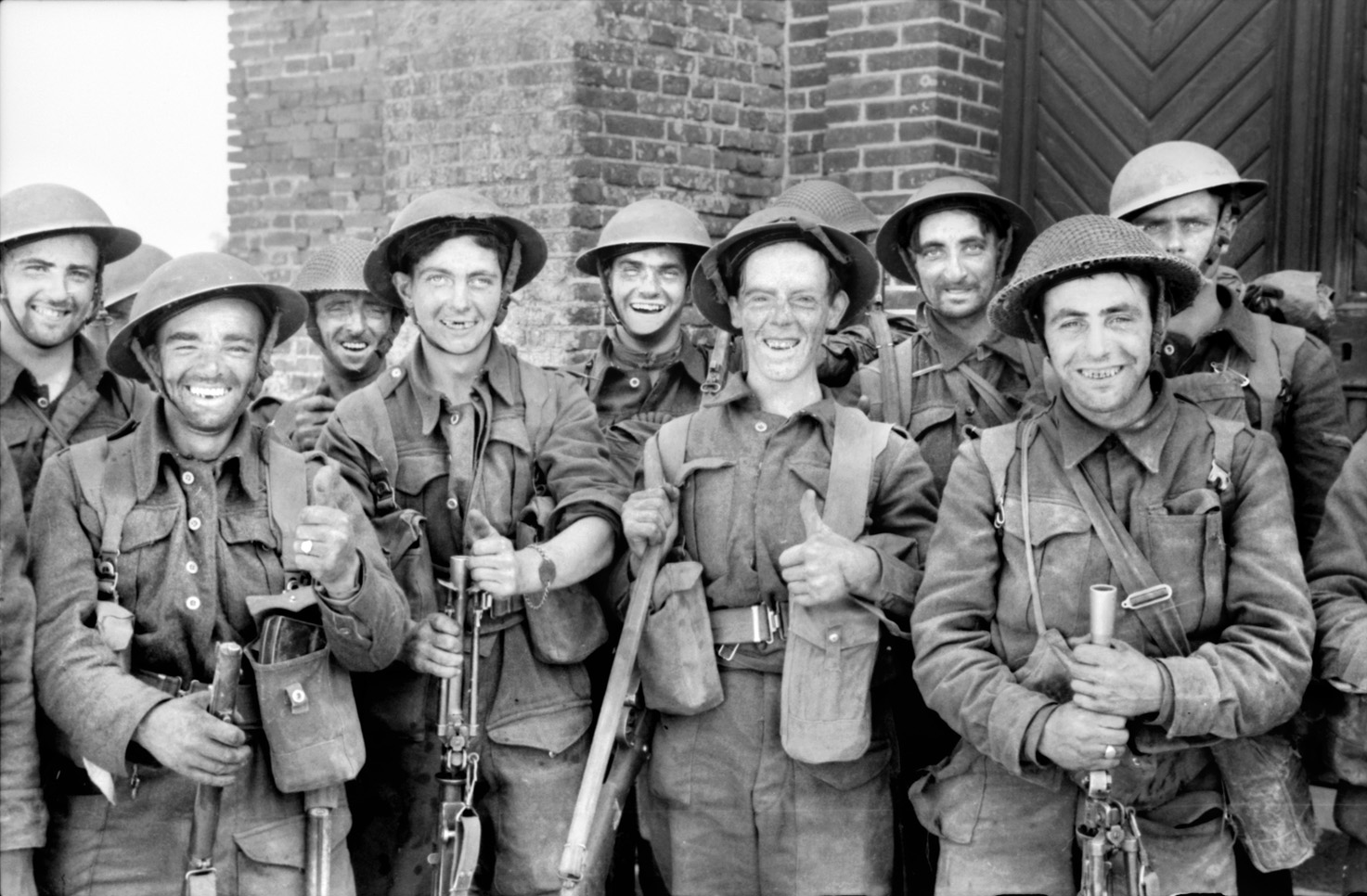
The decision to evacuate at Dunkirk was seen as disloyalty by many in France, however, with Britain’s politicians saying one thing and doing another.
Meanwhile, at the military level, General Lord John Gort, who was in charge of the BEF, was ostensibly following the direction of the French commander, Maxime Weygand, although with a proviso that he could choose otherwise if he felt that any proposal would have serious consequences for Britain.
This made the French command feel uneasy. At the level of the foot soldier, there was an increasing concern that the French troops had become defeatist—which was not unexpected, as their leaders were appearing indecisive. The men of the 51st Highland Division had typically thrown themselves into the fray, but many of them felt that they were being sacrificed by Britain for the sake of the Anglo-French relationship. When things went awry, many believed that they were the ones who would be in the front line.
Many regiments that were recruited from Britain’s tough urban neighborhoods in the belief that their hard upbringing would give them the upper hand in combat, but the Highlanders were the real McCoy, literally. A childhood and youth spent in the mountains, enduring some of the worst weather in Britain, learning to live off the land, and spending most of the day engaged in hard manual labor certainly prepared them for the forthcoming action—especially when it became hand-to-hand, which was just as well because, like most troops sent to France in the early months of the war, they were singularly ill-equipped with the weapons of war.
On the Maginot Line, they discovered that the Phony War was anything but phony: digging defensive positions, learning how to survive on night patrols, and taking casualties alongside their French brothers-in-arms.
Things got considerably worse after May 10, when the Battle of France began in earnest. Hitler’s Blitzkrieg had caught the Netherlands, Luxembourg, and Belgium on the wrong foot, and, before long, the Germans had Paris in their sights.
The 51st Division was pulled out of the line on May 24 and moved to the French Reserve, which meant they could be sent anywhere they were required to arrest the speed of the Blitzkrieg. They soon found themselves journeying northwestwards, following the River Somme to Abbeville, a large riverside town not far from the coast of the English Channel; they arrived there on June 1.
North of Abbeville was the German Army, and north of them was the remainder of the British Expeditionary Force, which had been making a bid for freedom across the Channel at Dunkirk since May 26. The Highlanders, together with the British 1st Armoured Division, a selection of lines-of-communication regiments, and the remains of the French Army did not know it at the time, but the Dunkirk evacuation was only to last another three days. Then, after June 4, they would have the German Army to themselves.
From June 1-3 the 51st Highland Division played a key role at the Battle of Abbeville, taking over from French troops. Positioning themselves along the Somme, two Highland brigades, supported by French tanks, on June 4 launched an attack on the Germans’ main bridgehead. This was effectively the last real Allied attack after Dunkirk and, despite their best efforts, their initial strike failed with one brigade losing 600 men.
The Scots fought hand-to-hand and charged with bayonets with a ferocity that drove the enemy back at a number of points. Ominously, the French tanks, whose armor was never in the same league as the machines that their German neighbors had been building across the border during the 1930s, were easily picked off by anti-tank gunners.
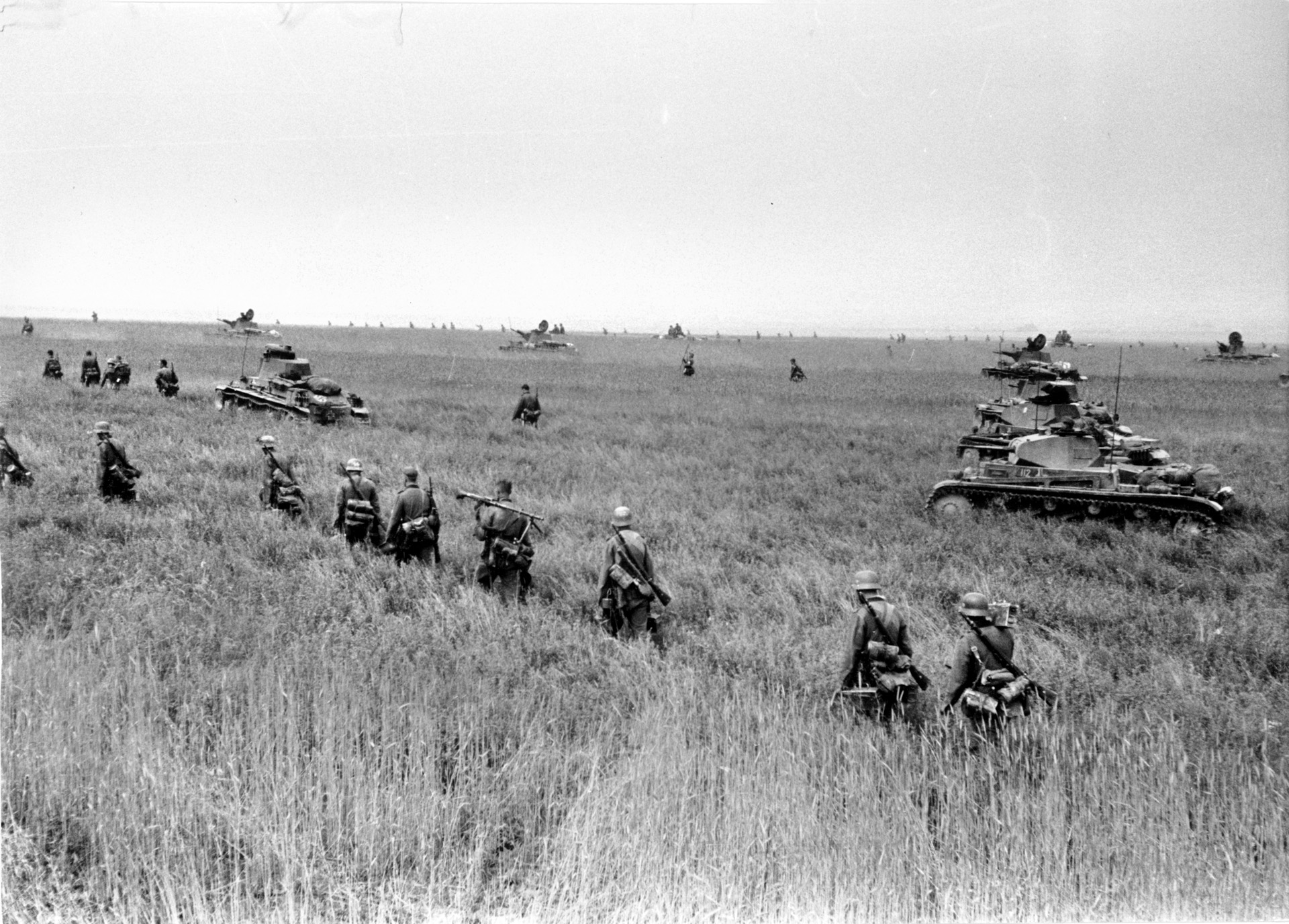
The French military commander General Maxime Weygand assessed the situation and declared that the Somme should be the final line, to be held at all costs, and asked Churchill for further support from the RAF. This drove a further wedge between the leaders, as Churchill had his eye on conserving his air force against a possible future air attack, which was to become the Battle of Britain, that would attempt to disable the country and soften it up for an invasion.
Not surprisingly, he refused. However, attempts were being made at this time to assemble a “Second BEF” to bolster the Allied response to the German penetration. The proposal was made on June 2 and, within a week, the first troops from Scotland’s 52nd Lowland Division and the 1st Canadian Division began arriving in France. It was seen by many as nothing more than a political gesture; by the end of the month, following the signing of an armistice between France and Germany, they had been forced to return to Britain.
The day after their main initiative at Abbeville, June 5 (which was also the day after the last troops were evacuated from Dunkirk), the Highlanders discovered what it was like to be on the receiving end of an enemy attack. It began with exploratory enemy patrols and continued with artillery and a new terror, the Ju-87 Stuka dive bombers, whose deadly whine they soon learned to recognize as the harbinger of doom when they dropped their loads with deadly accuracy.
The 7th Argyll and Sutherland Highlanders suffered particularly badly, losing 23 officers and 500 other ranks. This was not just a counterattack but the start of Fall Rot or “Case Red,” the second phase of Hitler’s plan to push the offensive deeper into France and involving over a hundred divisions.
British and French troops were spread along the Somme and the neighboring Aisne River, with the 51st Highland being required to cover over 19 miles of the front; it had become clear that to continue trying to hold a line along the rivers was pointless. They could not push the Germans back, they were stretched too thinly to hold the bridges, their communications were poor, and the enemy was finding routes across the river further upstream that could soon result in their encirclement.
The Highlanders were forced to retreat south and west, albeit a fighting retreat, and establish a new line along the River Bresle, which ran parallel to the Somme, a distance of about 30 kilometers. Their journey began in the dark, and they were eventually joined by A Brigade, consisting of the 4th Border Regiment, the 1/5th Sherwood Foresters, and the 4th East Kent Regiment (“The Buffs”), who had been sent north from Rouen on the Seine with nearly 1,000 infantrymen to help hold the new line.
Similar problems were being faced along other rivers in the area such as the Andelle and Béthune parallel to the Bresle, which were being held by an improvised group of battalions known collectively as the Beauman Division that was forced to withdraw westwards on June 8.
The new line on the Bresle didn’t last long. By June 7 the Highlanders were again at the mercy of German troops who had broken through further upstream and cut off their supply base at Rouen.
The following morning, an intervention by the Royal Navy suggested the possibility of an evacuation from the port of Le Havre, further west along the French coast. This seemed a viable option for the Highlanders but, at 150 kilometers from the mouth of the Bresle, it was going to be a tough challenge. Maj. Gen. Fortune accepted the withdrawal as inevitable for his beloved division, but his old-school, and very worthy, sense of honor dictated that his men should make the journey side-by-side with their French allies, with whom they had been fighting and dying for weeks. The division had been assigned to a French corps, and they would stay together.
Addressing his brigadiers and senior officers he said, “Gentlemen, I know you would not want us to desert our French comrades. We could be back in Le Havre in two bounds but they have no transport. We shall fight our way back with them, step by step.”
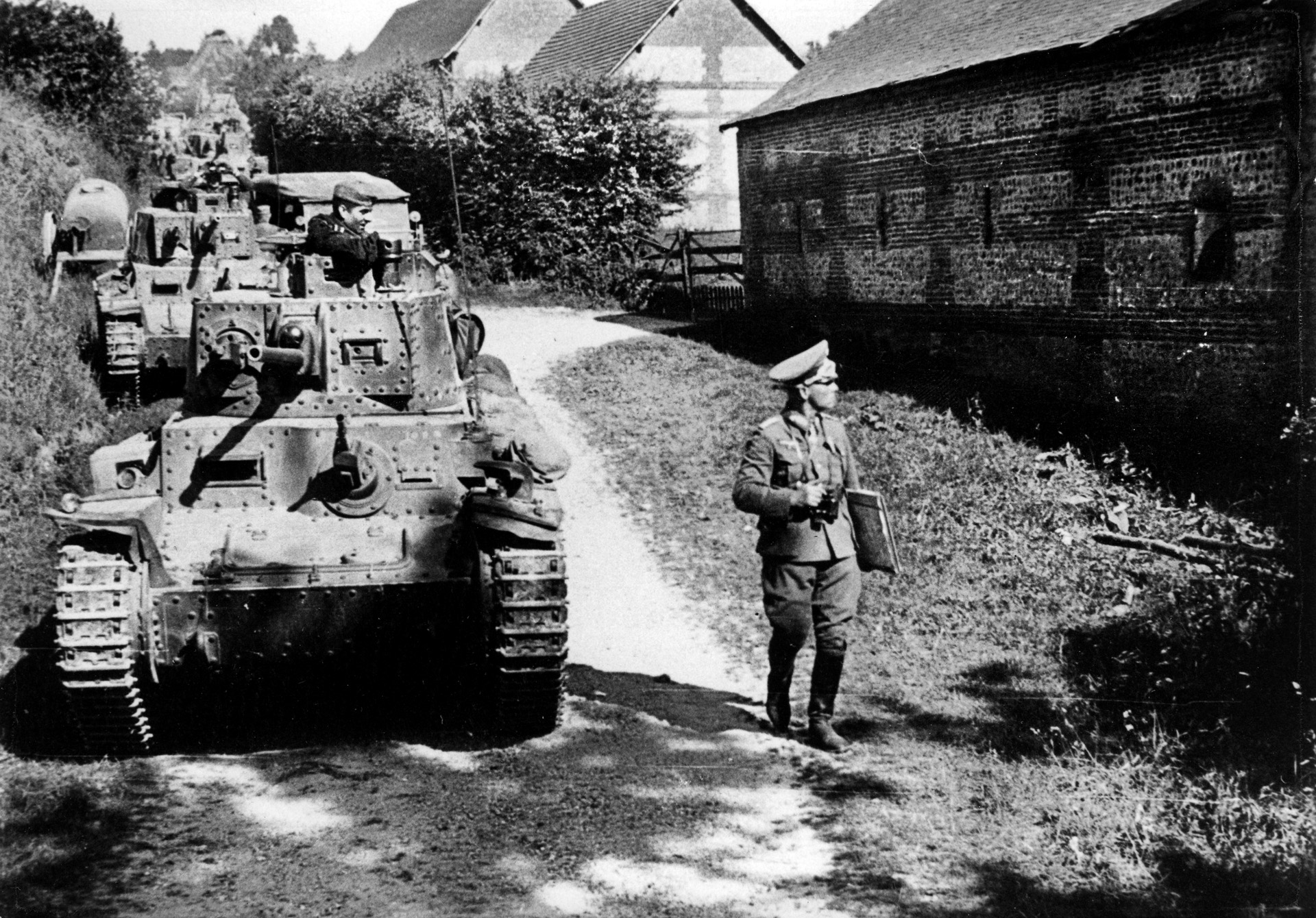
The French actually did have transport, but it was horse-drawn rather than mechanized and could not travel at more than 15 miles per day; this exemplified the lack of preparation that had made France so vulnerable to begin with. The journey was going to be a real race against time.
The efforts of the 51st Highland had been very much appreciated on the ground by their French allies, even if Weygand appeared to want more from Britain. A certain Colonel Charles de Gaulle, who was soon to become the new leader of the French people, commanded one of the French armored divisions at Abbeville and, in sharing the heat of battle, gained a huge respect for the division.
In a speech in Scotland in 1942, he said, “I can tell you that the comradeship in arms experienced on the battlefield of Abbeville in May and June 1940 between the French armored division which I had the honor to command, and the 51st Highland Division under General Fortune, played its part in the decision which I took to continue fighting on the side of the Allies to the end, whatever the course of events.”
The earlier retreat to Dunkirk would not have been possible without a valiant rearguard action, largely performed by French troops, many of whom paid the price for being at the end of the queue for salvation. General Fortune, too, had his band of guardian angels, in the form of the recently constituted A Brigade, which had just arrived from Rouen as support. They were to stay on the line along the Bresle and play their part in slowing down their pursuit by the enemy while Fortune and the Highlanders withdrew westwards.
Lance Corporal Fred Scholes was one of this band of angels. A medic with the 4th Borders, he was amply qualified in looking after others. Scholes joined the regiment in 1931, and his genealogy on one side of the family tree included the Ross clan from the mountains of Scotland, so he was happy to be of service to his kith and kin.
His regiment had been based in Brittany until the recent action started but was moved across to the Somme just before the Dunkirk withdrawal to attack German positions and destroy bridges across the river, a task they performed with precision. On June 4 they were attached to the 51st Highland Division and two days later received orders to clear enemy troops from the Forest of Eu, south of the town of Incheville on the Bresle.
The Sherwood Foresters were sent up as replacements the following day and then, on June 8, came the orders that were to define the reputation of The Border Regiment in this campaign.
German forces had been using the bridge north of Incheville at night to bring up reinforcements, and the 4th Borders were to defend the little town at all costs. The orders were delivered by their CO, Lt. Col. T.W.A. Tomlinson, himself: “For God’s sake, see that no one comes over that bridge.”
With A, B, and C Companies engaged in trying to clear the Germans out of the forest further to the south, the task fell upon D Company to hold the line. By the end of the day, it was clear from the war diary that the battalion was under such heavy fire that it had to move out. Ordnance was raining down from all directions, leaving the men in no doubt that although they still held the Incheville bridge, the Germans had crossed the Bresle elsewhere and they were, in effect, surrounded.
Orders were issued to withdraw to the coast near Dieppe. D company’s commander, Major Hopkinson, had been wounded and brought back from Incheville, and despite the best efforts of Lieutenant Williamson—who was now in charge—contact between his company and the rest of the battalion was becoming increasingly fragile. Ominous references in the war diary stated: “1300 (June 8): Communication with D Coy difficult due to road leading to Incheville being under MG fire. 2030: No further messages from D Coy. Unable to get through to them. 2230: Attempt to get through to D Coy to tell them to withdraw under cover of darkness. 0001 (June 9): No further word received from D Coy. 0600: Unable to get through to D Coy.”
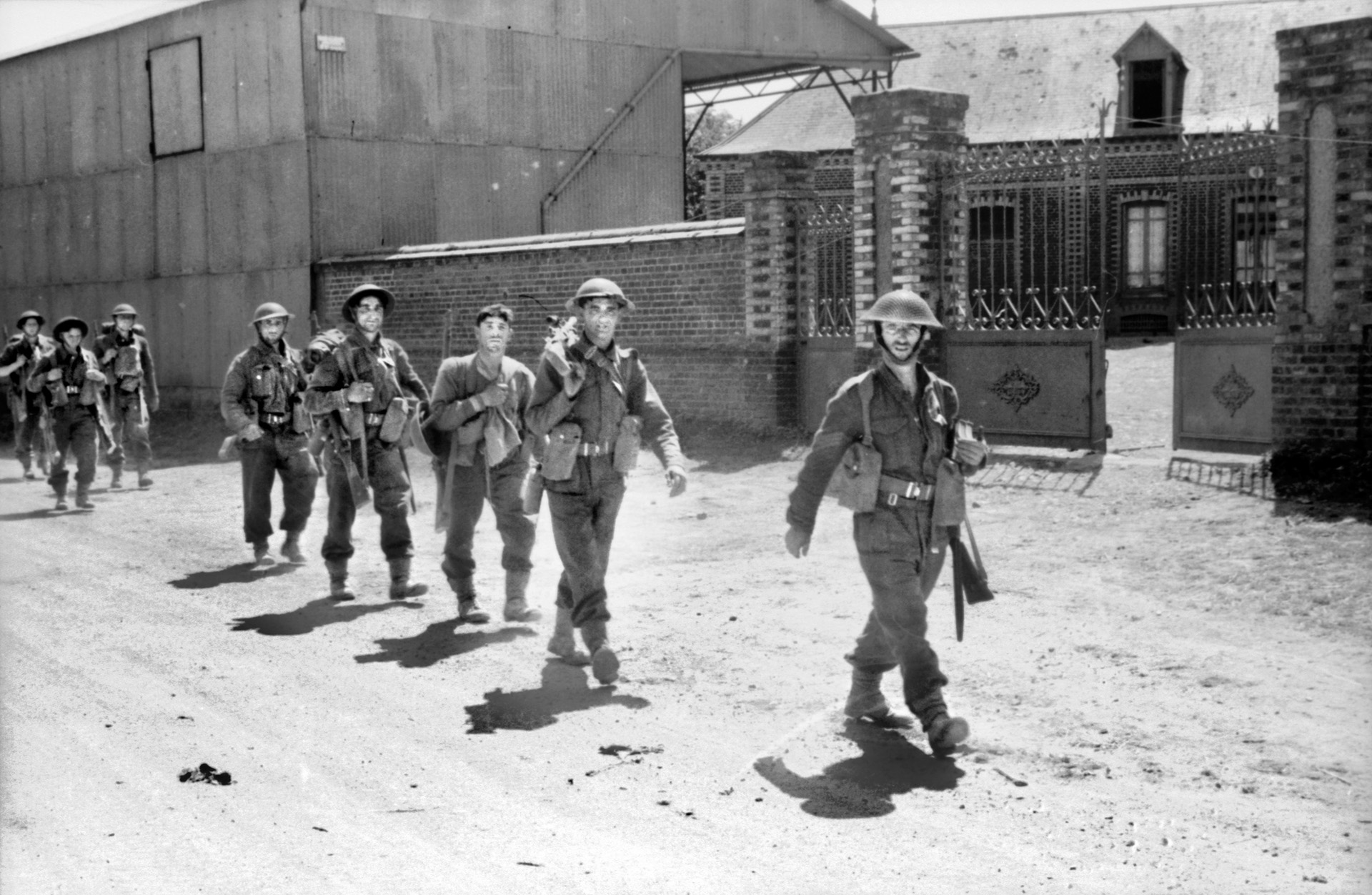
Companies A, B, and C left for Fécamp on the coast near Dieppe, a town recognizable to most as the base for the Radio Normandie transmitter, with heavy hearts and no alternative but to hope D Company would be able to follow. Some wounded from D company were taken with them, including Major Hopkinson, their company commander.
Despite these communication difficulties, D Company was still performing the tasks assigned to it under the leadership of their new commander, Lieutenant Williamson, whilst under heavy fire. When the Sherwoods had joined them earlier in the day, an artillery barrage aimed at the Germans struck too close, causing serious casualties. Williamson allowed a lorry loaded with wounded to withdraw further south, but they ran into a German convoy and were captured.
Much of the time was spent fortifying houses, building barricades, and training anti-tank and Bren guns onto any roadblocks placed in the path of the enemy. If they had possessed radios, they would have received the orders to withdraw that would have saved many lives. Three messengers were sent out, but they never returned; a decision was made to continue fighting until relieved or fresh orders arrived.
They held on until June 14 under intolerable conditions. D Company could only hope that their valiant rearguard action had enabled the 51st Highland to escape to safety. On the morning of June 14, a captured British officer who was sent into the village by the Germans to make Williamson consider his situation told him that the Highlanders had made their escape, although to where was not clear. At this point, surrender seemed the most realistic option.
The remainder of the 4th Battalion Border Regiment had not found the journey to Fécamp an easy one. They had held their positions till dark to slip away under cover of night. Motor transport traveling in the dark without lights was no picnic at the best of times, but their convoys were competing for space down narrow lanes with French troops.
Among them were pathetic groups of fleeing refugees trying to salvage what was left of their lives in handcarts. The dignity of these innocent bystanders had been the first casualty of the war, and now they were losing their homes, as well. Traveling by night, however, meant they were less likely to be strafed by trigger-happy Luftwaffe pilots.
Major Gubbins of B Company had as his first objective the crossing of the River Béthune via the Archelles Bridge, which was due to be blown at midnight to hamper pursuit by the Germans. By 11:45 pm the bridge had still not been reached when fellow officer Robert Hind of A Company arrived on a motorcycle from the rear.
Gubbins sent him off at full speed to find the bridge and prevent its destruction. By some miracle this was achieved and disaster averted. The convoy reached the bridge, crossed it, and minutes later it was a pile of stones in the river. In his account after the war, he described the event: “When the last vehicle had crossed the bridge, up she went, a terrific explosion.”
When the battalion reached Fécamp on June 10 they found the enemy waiting for them. A firefight ensued, and once again the only option was to try and escape under cover of dark. They had fought off an air attack during the day, and at night they were fired on again, which killed the driver of the lead truck in the convoy.
Major Gubbins climbed on to the back of his truck to man a Bren gun and Boyes anti-tank rifle in preparation for further trouble. Le Havre would soon be in reach. However, they soon came under fire again, and Gubbins realized that he had run into a German convoy and was surrounded. With no alternative, he and the remainder of his company surrendered.
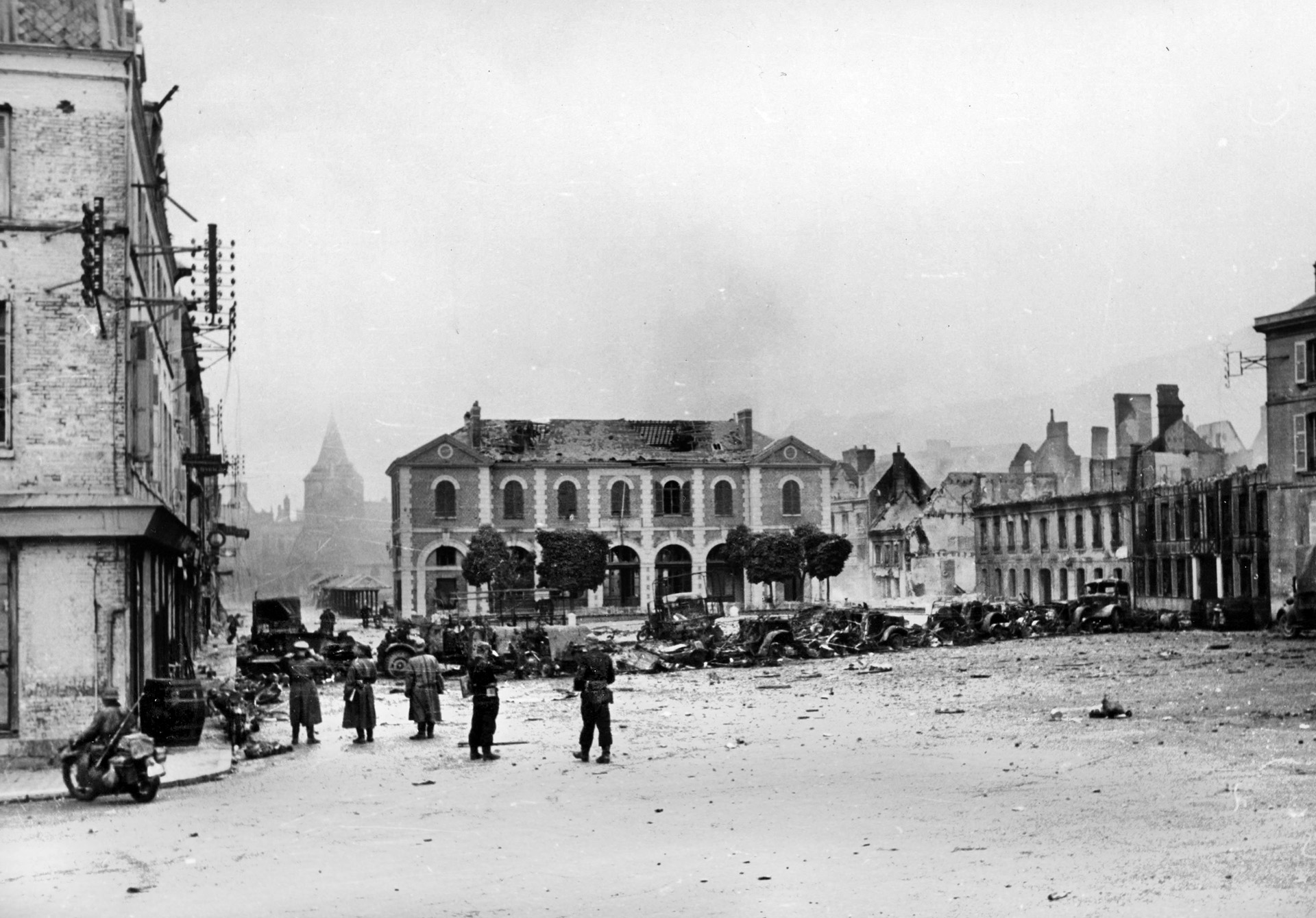
On the morning of June 11 the remainder of the Border Regiment were still under attack while fighting their way to Le Havre. There was a major encounter with the enemy at Le Chesnay to the southwest of the town and, sadly, this was where medic Fred Scholes lost his life—at Saint-Leonard on the Route du Havre, only 25 miles from the port where the rest of his battalion were to be evacuated that evening.
Records show that he was buried beside the road to Le Havre with Thomas Kelly of the Royal Army Service Corps, probably his driver (in 1942, his body was transferred to the Fécamp Communal Cemetery by the local French authorities). Ships took his surviving comrades to Cherbourg, from where half of them were evacuated, arriving at Poole in Dorset on June 17. The remainder traveled inland and sailed to England from Brest on the SS Yorktown, arriving in Portsmouth two days later.
The purpose of the Border Regiment D Company’s sacrifice had been to buy enough time for General Fortune and the 51st Highland to reach a point on the coast where they could be evacuated. Fortune was planning to head for Le Havre, following the best intelligence available at the time. Aware of the speed at which the German Army was moving, Fortune collected the remaining units of A Brigade, plus battalions of the Black Watch, Argyll and Sutherlands, and Royal Scots Fusiliers and sent them on ahead to secure his line of retreat to the port. This group became known as “Ark Force.” It was this action that saved the Border Regiment.
Unfortunately, it was not just the German army that threatened Fortune’s chances of evacuation. Ever since withdrawing from the Somme against Weygand’s instructions to hold the line and then making a tactical retreat from the Bresle, his actions were criticized by the French high command, one of whom nicknamed him “General Misfortune.”
He was, however, fully supported by Lt. Gen. James Marshall-Cornwall, the liaison officer between the French Tenth Army and the War Office, who bluntly told Weygand that the 51st deserved to be relieved after so many weeks of conflict. If they wanted a British presence on the front line, they should be replaced by two fresh divisions.
Weygand’s actions were becoming increasingly erratic. At one point, he threatened to request an armistice to end the war if German troops managed to cross the River Seine, which would put them in striking distance of Paris—in other words, if Britain did not make an even bigger commitment to a conflict that was becoming more one-sided by the day.
Marshall-Cornwall’s persistence eventually paid off, and Fortune was allowed to withdraw—but to Rouen and to more combat, rather than to the coast for evacuation. Before a move could be made, the 7th Panzer Division, led by Erwin Rommel, who had been at the front of the Blitzkrieg since it started, had sped to within striking distance of Rouen. Weygand then proposed that they shift their axis further north to the town of Caudebec.
Fortune’s one ally was Admiral William Melbourne James of the Royal Navy, who surveyed the Channel in a motor boat on June 10 and, upon seeing the Germans advancing on Le Havre, suggested the small town of St Valery-en-Caux would be a safer evacuation point and began to prepare a flotilla of ships.
The War Office, still fearful of France capitulating, forbade James from carrying out an evacuation and proposed that Fortune should withdraw to the Seine. One port that he was never allowed to consider was Dieppe, which was much closer than Le Havre. Although it had sustained some damage, on June 9 the British Naval Liaison Officer in Paris sent a signal to the admiralty in London to say it was sufficiently clear for an evacuation. If the British government had been serious about getting Fortune and his men back to England, Dieppe would have been the best option.
The situation was becoming farcical and causing irreversible delays at a time when the pace of the 51st Highland Division was being dictated by French horse-drawn transport and Rommel’s panzers were in overdrive.
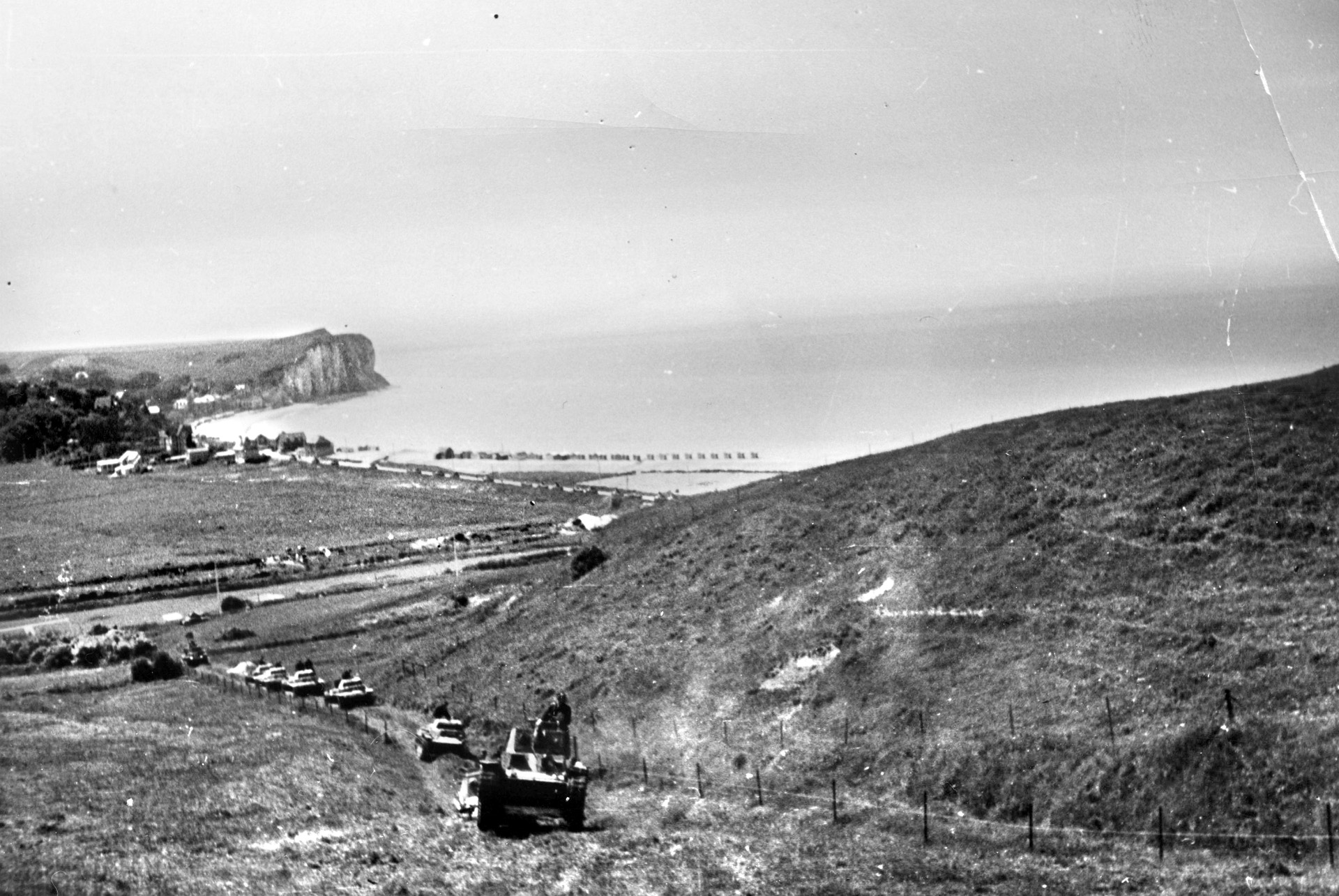
The irony for Fortune was that he had only just sent Ark Force off to secure the line of retreat to Le Havre so that the 51st Highland would have a better chance of escape. Very soon, they would be lining up for evacuation while he was holding back the might of the panzers thanks to last-minute changes and the lack of agreement between the French and British leaders.
His division set off for St. Valery late on June 10, leaving behind everything but essential items in order to speed up their journey. Even the artillery was rationed to 100 rounds per gun. Another night drive along narrow lanes added further tension, but they arrived at St. Valery the following morning.
A small coastal town with a fishing harbor surrounded by quaint, colorful houses, St. Valery would have been a pleasant sojourn for troops on leave, but there was no time for sightseeing or relaxing. On arrival, Fortune set his infantry battalion commanders to work, hastily creating a box-shaped defense around the town but having no time to actually dig in defenses to protect themselves.
They would hold these positions during the day and then descend to the port and beach as soon as it got dark, hoping that Admiral James would arrive with his flotilla to rescue them. All the division’s motor vehicles were then put out of action, except for the Bren gun carriers, which could still be useful if they had to fight a rear-guard action.
Unfortunately, by the end of the morning, their party had been unceremoniously gatecrashed. Rommel’s panzers arrived at a spot to the west of St. Valery and seized the high ground, which allowed his gunners a perfect view of the town.
To make matters worse, Rommel had brought the Luftwaffe with him. Artillery shells and bombs rained down on the town and its harbor, reducing much of it to rubble and setting it alight within minutes. Next, the panzers arrived, but Fortune’s men were ready and beat off the attack.
The tanks were followed by infantry, who were given the same treatment by the Highlanders. Some penetrated further into St. Valery and were driven out by house-to-house, hand-to-hand fighting with a ferocity that was tearing this sleepy seaside town apart. The Scots were fighting for their lives; why waste a valuable bullet when a bayonet would suffice? This was a full division, with drivers and cooks as well as trained infantrymen who would use every weapon at their disposal to survive.
Despite the Highlanders’ best efforts, the Germans continued to advance and, late in the afternoon of June 11, they made a full-blown attack on the defenses, employing 400 tanks and 1,000 field guns as well as the Stuka dive-bombers of the Luftwaffe.
A thousand prisoners were taken, and by 7:00 pm that evening Fortune had received Rommel’s surrender ultimatum. Following Fortune’s refusal, another ferocious attack was launched on the town, which continued all night.
Having fired over 2,500 shells, the Germans launched another tank assault to try and penetrate the defenses. Once darkness fell, and with the infantry still holding the box around the town, the remaining Highlanders moved down to the beaches and harbor as planned in the hope that the Royal Navy would be waiting.
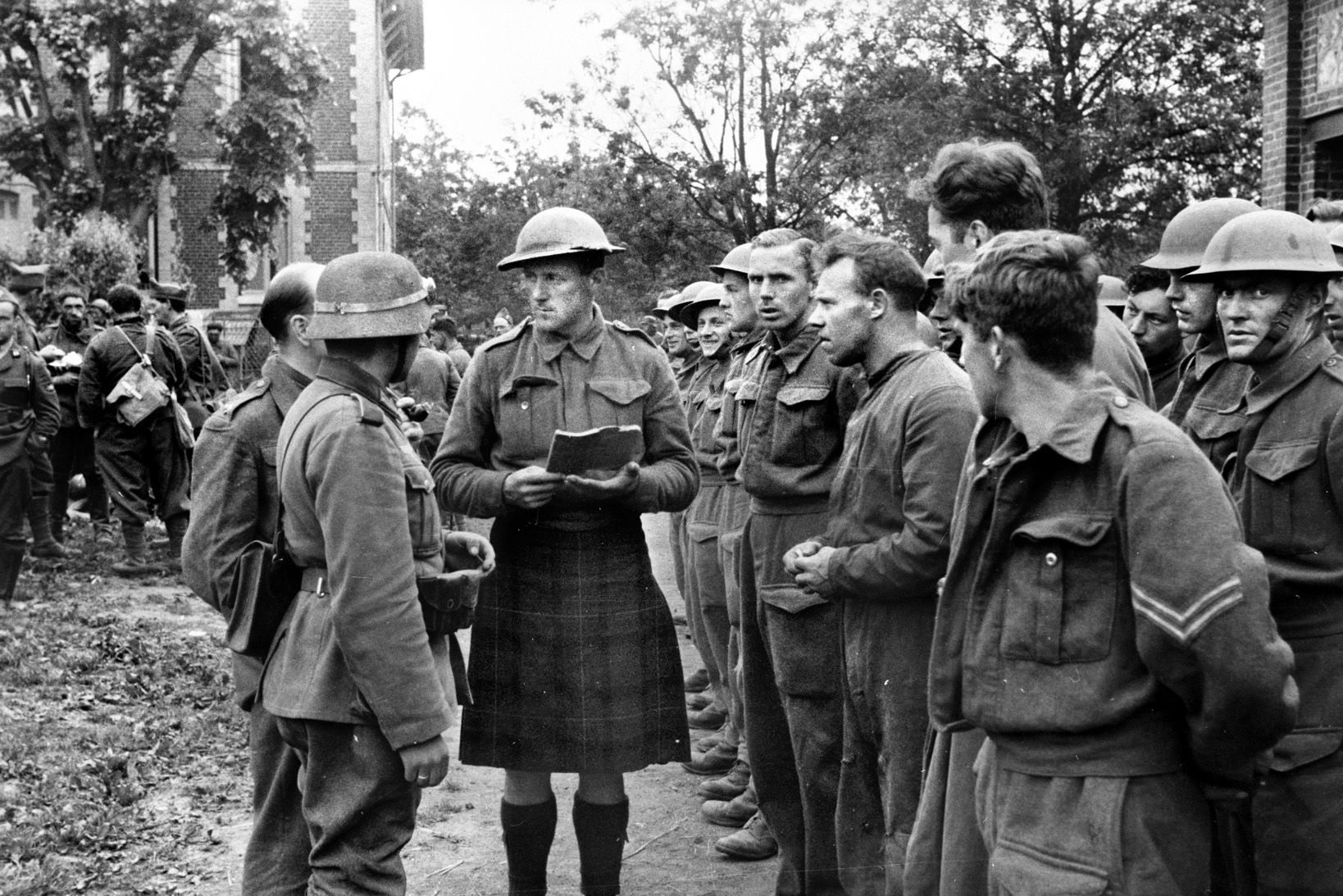
Admiral James was indeed offshore, with 207 vessels of various sizes. During the day they had been fired upon by the German guns and had to withdraw till they were out of range, intending to return after nightfall, but with the night came dense fog. Tragically, since only 11 ships had radios and the others could only communicate by signal lamps, there was no way that an evacuation could be organized safely.
At 3:00 am on June 12, Fortune ordered his men back to the town, hoping to launch an attack at first light that would hold the Germans back till they could make their escape the following night. When they took stock of the weapons and ammunition available, however, it was clear that they would have very little chance of success, especially since they had neutralized a number of their own guns the day before so they would be of no use to the enemy.
They were incapable of holding back the Germans, who eventually occupied the cliff-top area. In an attempt to escape and get back to the beach, many soldiers tried to climb down the cliffs using rifle slings tied together. A number fell to their deaths in the process.
At 8:15 on the morning of June 12, a white flag was seen flying just 100 meters from Fortune’s headquarters in the town. He immediately asked for it to be taken down but discovered that the French had raised it in order to surrender.
Fortune issued orders to fight on, but two hours later, in order to avoid the mass slaughter of his men, he decided that there was no option but to finally surrender to Rommel, whose 7th Panzer Division now occupied the town. Eleven thousand Highlanders were taken prisoner; 1,000 men had been killed in the action.
A number of Highlanders did manage to escape, however. As part of Operation Cycle, which was the plan that had favored Le Havre as the main port of evacuation, a series of fishing ports and seaside towns on the south coast of England, including communities at Eastbourne, Newhaven, and other towns, rallied together, as had happened at Dunkirk, and produced another flotilla that included more “Small Ships,” piloted by civilians ready to risk their lives to bring the troops home.
This “Haven Blue Flotilla,” which included nine motor yachts and three fishing boats towed by a coastal collier, sailed from Newhaven and approached St. Valery en Caux during the afternoon of June 11, but without encountering Admiral James’ vessels. They returned home empty and came back to St. Valery after dark, witnessing a town both on fire and under fire, and sailed four miles along the coast to the smaller port of Veules les Roses at 1:00 am on the morning of June 12. They were joined by other, larger ships, including the Goldfinch, commanded by Lieutenant Thompson of the Royal Navy. By 2:30 am, the lifeboats from the Goldfinch were collecting the first lucky survivors off the beach.
The defensive perimeter established around St. Valery extended as far as Veules les Roses, with the Seaforth Highlanders holding the line down to the beach. There were also others who had moved out of the town along the coastline while it was under heavy shell and machine-gun fire.
One of them was Captain Derek Lang, who later described his two-hour, exhausting hike along the beach to Veules, where he found two vessels, one French and one English, loaded with men. They were so overcrowded that they had to wait for the tide to float them off. He and his men returned to the shore and tried to fend off with a pair of Lewis guns the German tanks that were closing in on the scene. The tanks won the contest, sinking the ships and wounding Lang, who was subsequently captured.
Off St. Valery, further to their west, Admiral James had been praying for the fog to lift, while General Fortune was losing faith and bringing his dispirited troops back off the beach to the town. The fog and rain actually assisted the men at Veules les Roses because the bad weather was hindering Rommel’s troops. They were aware of activity on the beach but had nothing visible to aim at during the night. However, at 8:30 am an artillery bombardment opened up from both sides of the bay. Some of the small ships had ex-World War I Lewis Guns fixed to their decks, but they were little more than psychological support against the artillery.
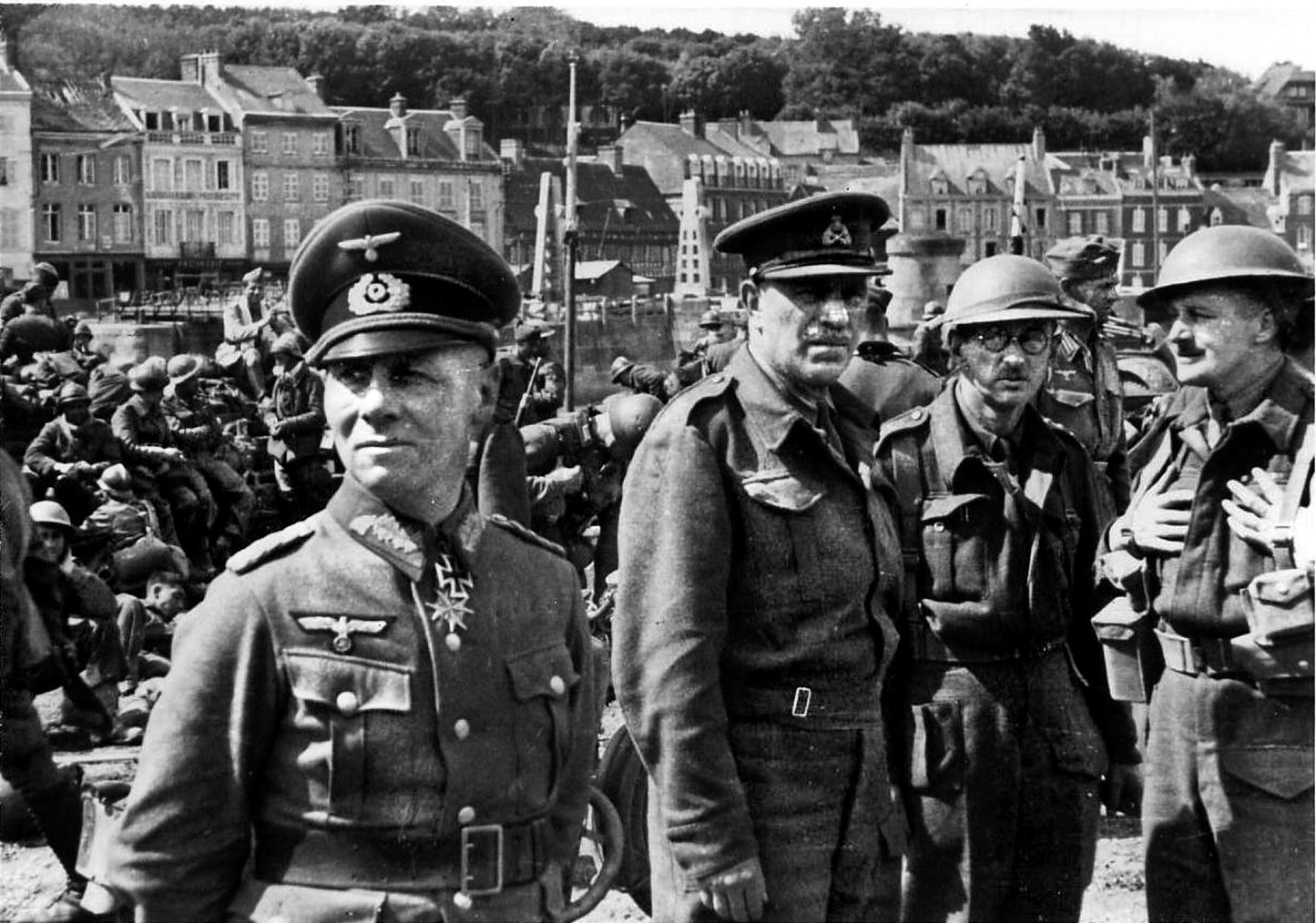
There were French troops now on the beach, and also a French ship, the Cerons, which sailed close enough to the shore for large numbers to clamber aboard. But as the tide receded, tragedy struck. The additional weight of its passengers caused the ship to become stuck fast on a sandbank, making it a sitting duck for the German gunners. Those troops who did not become victims of the first salvoes jumped back into the water and waded ashore to certain captivity before the ship was destroyed.
A total of 3,200 men from the 51st Highland Division were rescued from the beach of Veules les Roses on the morning of June 12, along with 300 French troops, but the remainder suffered the same fate as their comrades at St. Valery. The arrival of good weather, daylight, a low tide and further incursions by the Germans meant that nothing could approach the beach without being blown to bits.
Unknown to Fortune at the time, over 11,000 troops from Ark Force and Le Havre itself were evacuated from the port over the period June 10-13. He had been instrumental in getting them there ahead of his division to pave the way but had been unable to follow.
There were a handful of men who eventually found their way back to Britain using the sort of initiative that would make them heroes in Boys’ Own comics. Captain Derek Lang was one of them. After being incarcerated in a POW camp in Belgium, he escaped and found his way to Corsica and traveled from there to Beirut before finally rejoining the British Army.
In June 1944, he joined the liberating armies as a lieutenant colonel of the 5th Cameron Highlanders. As St. Valery en Caux was about to be liberated at the start of September, Field Marshal Bernard L. Montgomery proposed that the 51st Highland Division should be the troops to take charge of the operation, and Lang found himself back where he was captured.
His final visit, as retired General Sir Derek Lang, was in 2000 at the age of 86, when he was a guest of honor at the 60th anniversary celebrations. His name lives on through the footpath up the cliffs, Sentier Derek Lang, which was the route up which he was marched as a German prisoner.
Operation Aerial was launched on June 15 to evacuate remaining Allied forces and some civilians from ports in western France that were still free from German occupation. Led by the Royal Navy and supported by the RAF, it continued till June 25, when France signed the armistice with Germany. The main ports involved were Brest, Saint Nazaire, Nantes, St. Malo, and Cherbourg.
Troops from the 52nd Lowland and the First Armoured Divisions embarked from Cherbourg as part of Aerial from June 15-17. Following them came remnants of smaller units, plus numbers of civilians and soldiers from the Polish army, who became a significant “army in exile” that trained in Britain before returning to fight overseas. Some Czech and Belgian soldiers also managed to escape in this way. Overall, Operation Aerial accounted for the evacuation of over 190,000 Allied service personnel and civilians.
The operation did not proceed without tragedy, however. On June 17 the Lancastria, awaiting departure with more than 6,000 passengers on board, became a casualty of German bombing and sank with the loss of over 3,500 lives. This event, like the loss of the 51st Division, was not publicized at the time because of its possible effect on public morale.
For most of the Scots, the outcome of their surrender was five years of captivity and an uncertain future when they arrived home. In 1940 the newspapers had been full of the Dunkirk rescue, but the story of the capture of the 51st Highland would do nothing for the morale of the nation, so it had been kept quiet.
When they arrived home in 1945, they did not take their place as conquering heroes like many of their comrades, yet the value of their contributions to the war effort during the short time they were in action was as praiseworthy as that of any returning soldier.
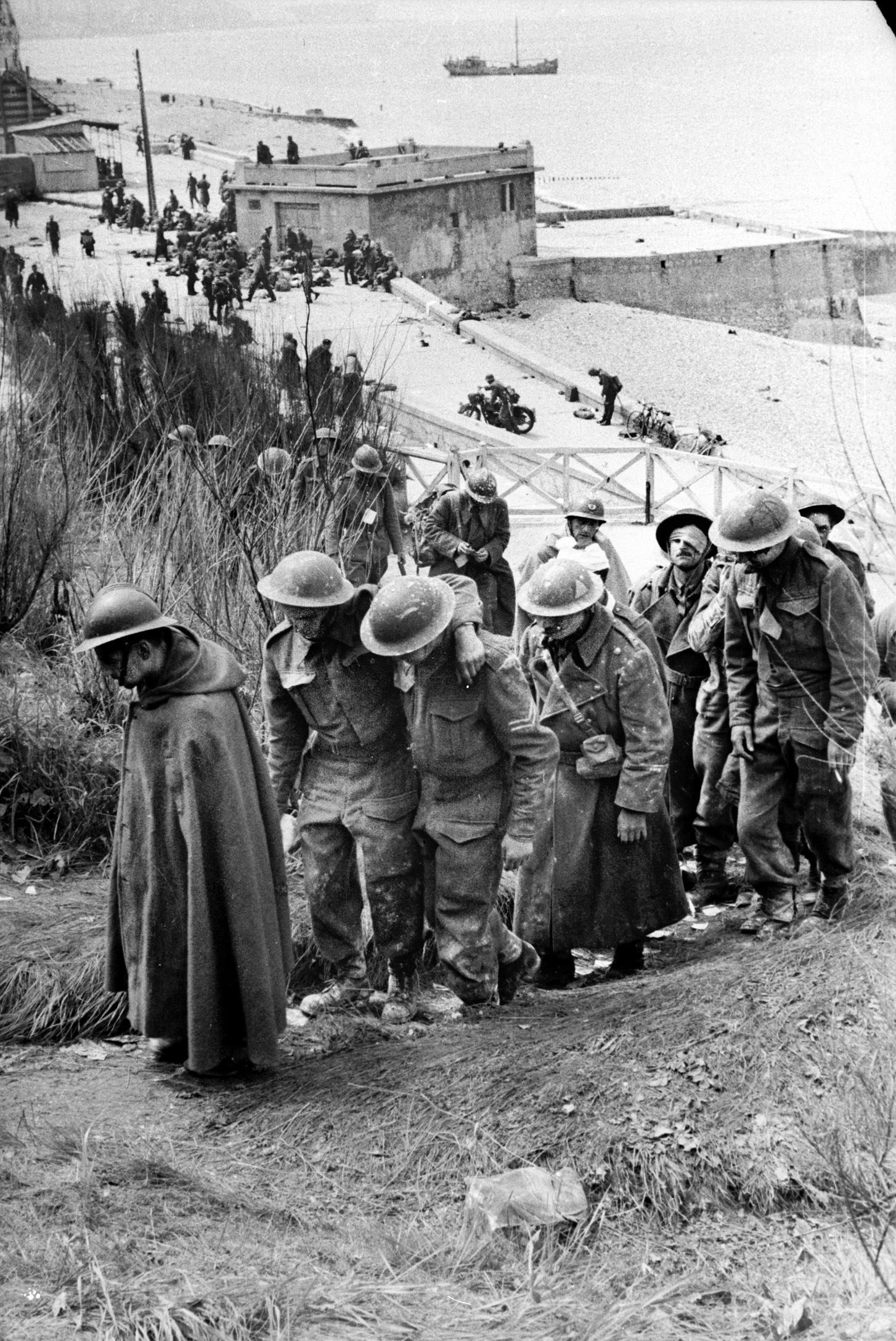
In seeking to analyze what went wrong after Dunkirk, it is easy to apportion blame. Churchill saw the French as responsible because of their defeatist attitude, while some of the French were quick to point the finger at “Perfidious Albion,” the title that had been attached to Britain on several occasions in history when their relationship had run aground.
The military situation had been changing so rapidly from day to day, however, that there had been little time to develop a workable plan, and much had depended on luck. Dunkirk went very well. Churchill was lucky, and the fact that it coincided with his arrival as prime minister meant that the British public felt that they now had a savior.
However, his persistence in keeping the 51st Highland in the front line as a gesture to prevent the French from surrendering was only ever going to result in them being sacrificed for short-term political gain. The fact that they lasted as long as they did and never gave up till they faced annihilation is testimony to their caliber. They should have been given the credit they deserved rather than the ignominy that comes when the leadership has made a catastrophic mistake and seeks to hide the evidence.
It is only in recent years, as historians have reviewed the information, collected the accounts of survivors, and rewritten the story, that the heroism of the 51st Highland has been recognized. It should be remembered that without the force of their aggression at Abbeville during the period of the Dunkirk evacuation, Hitler would have surely felt he could have committed more divisions to destroying those troops trying to escape.
Furthermore, the impression the Highlanders made on de Gaulle convinced him that if other British troops could menace the enemy in the same way, there was hope that together they could eventually overcome their invaders.
But they were not the only heroes. The support received from the units in A Brigade, for example, especially D Company of The Border Regiment who held out for seven days at Incheville, has must be recognized. The only real attempt to take on Hitler’s army proactively was at Abbeville, and when German might prevailed here, the other actions were essentially defensive, albeit heroically defensive. But the game was up for France and the BEF.
To continue fighting the war for France, de Gaulle had to escape to England, and the remaining British troops had to do the same, lick their wounds, and acknowledge that they had totally underestimated the capability of the German war machine.
Fortunately, the English Channel and the RAF gave them the breathing space they needed and, together with the distractions of the Russian front and elsewhere, ensured that they did not suffer the same fate as France.
As well as the historical accounts, the story of the Highlanders has been commemorated in other ways. The Scottish singer songwriter Davey Steele wrote a song for The Battlefield Band entitled The Beaches of St. Valery, which contains some powerful and perceptive lyrics.
Davy Steele’s uncle and father served with the Argyll and Sutherland Highlanders who were at the heart of most of the action, especially the Battle of Abbeville.
In 2012 a formal twinning relationship was established between Veules les Roses and Alfriston, just inland of Newhaven on the English south coast, where the flotilla set sail to rescue survivors on the morning of June 12. There are now regular annual events involving local schoolchildren and visits from uniformed servicemen to commemorate and remember the actions of the men of the 51st Highland Division.
A memorial now stands on the clifftops, together with a gun retrieved from the French ship Cerons, which ran aground during the rescue. As recently as 2018, with the support of 101-year-old Dame Vera Lynn, a local author, Dr. June Goodfield, was able to collect personal recollections from local families to write Glory from Defeat: Our Second Dunkirk as a tribute to the Newhaven flotilla and the men they rescued, bringing a hitherto little known and poignant epic to the notice of Britain’s national media.
In June 2013, Fred Scholes’ niece and her husband tracked down his grave in the communal cemetery at Fécamp, the first family members from their home in Manchester to ever visit and pay their respects. As they laid a wreath with the words “From the Family that you never met,” they disturbed a butterfly, which took to the air and lingered as if to show its appreciation, returning to settle on their floral gift.
British servicemen, like Fred, who became casualties in the actions following the Dunkirk evacuation lie in cemeteries dotted across northern France. They were interred by the French after their comrades had escaped across the Channel as an act of brotherhood. Their graves were subsequently recognized by the British authorities and allocated a special plot and headstone by the Commonwealth War Graves Commission.
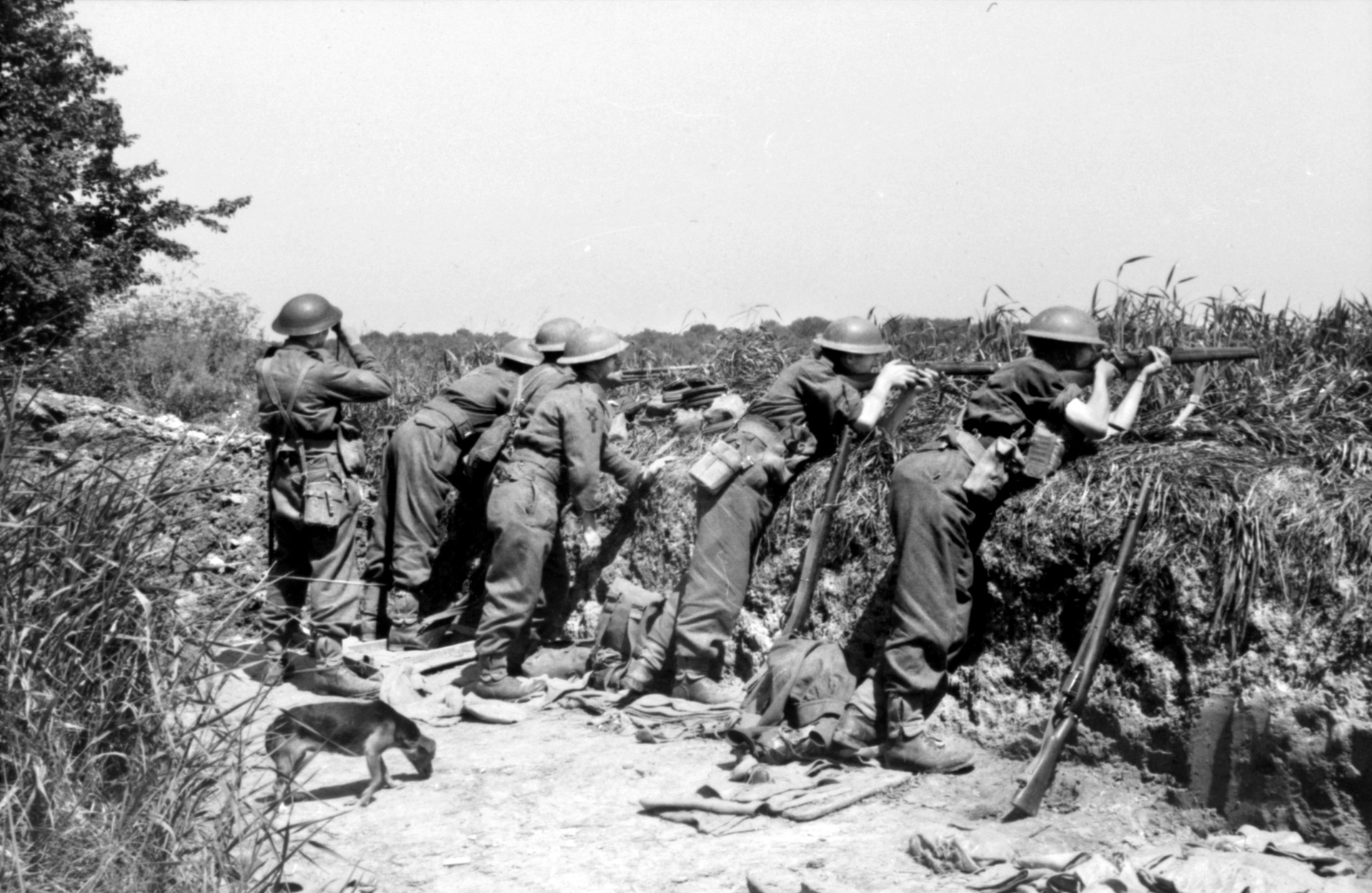
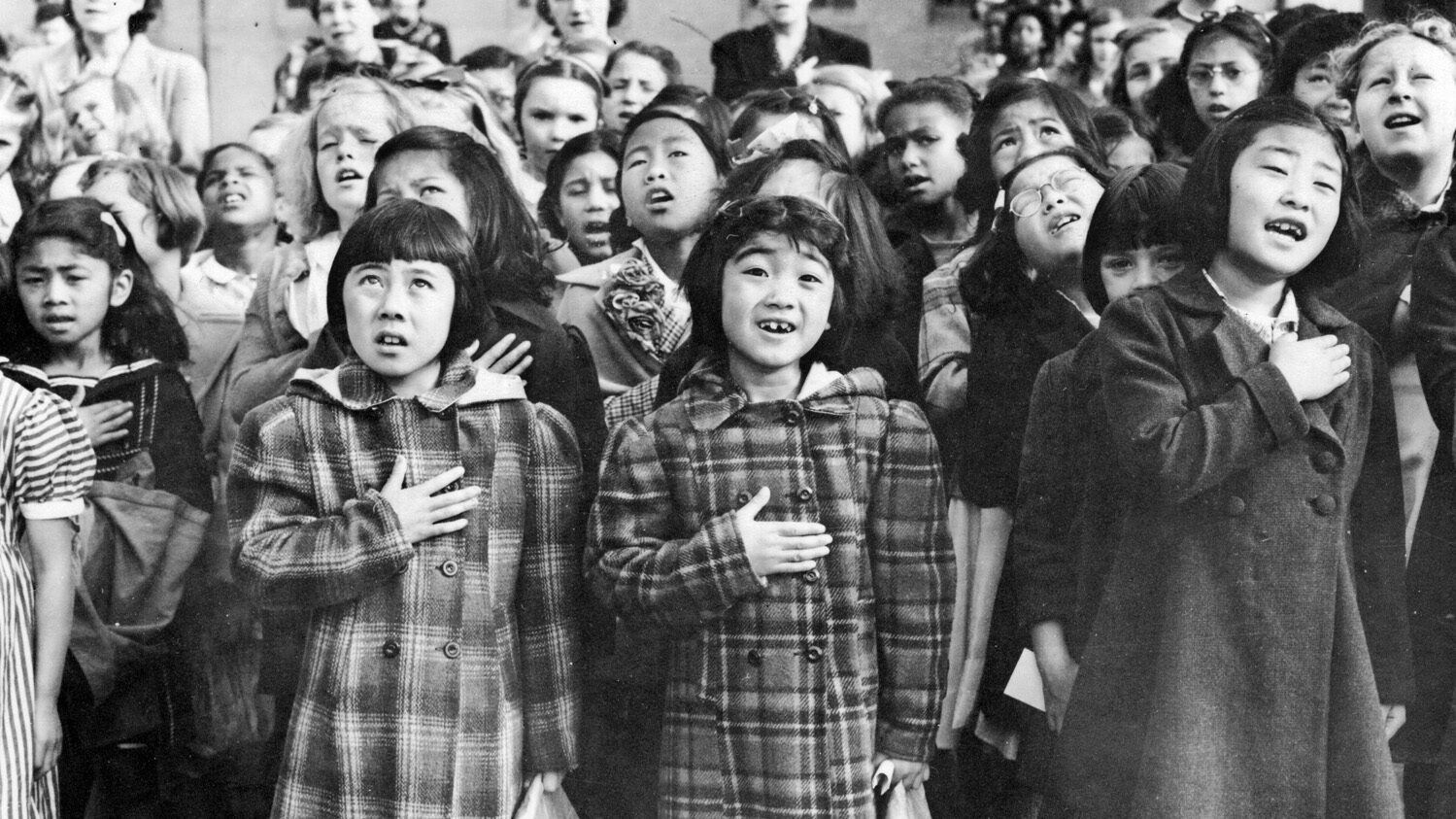

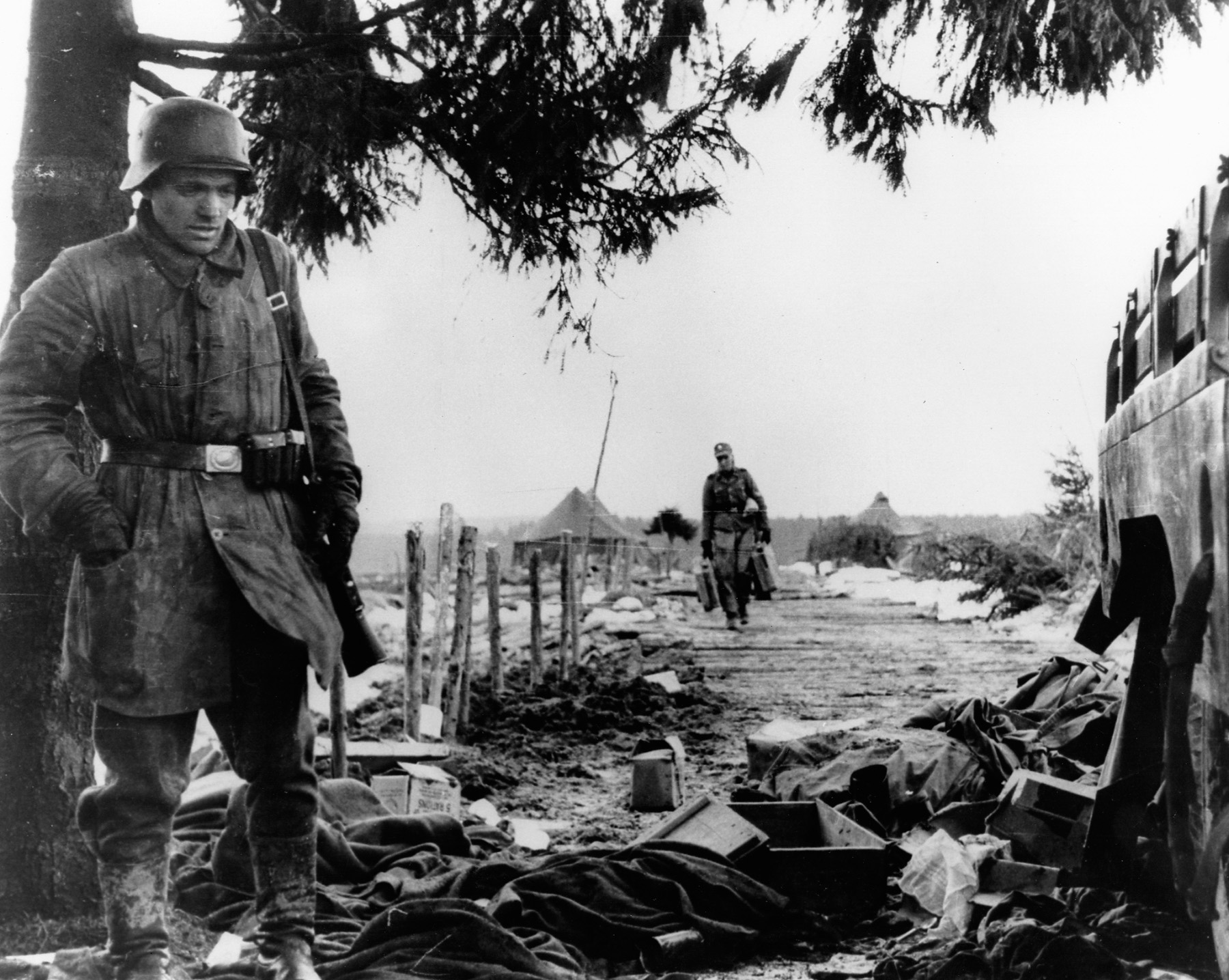
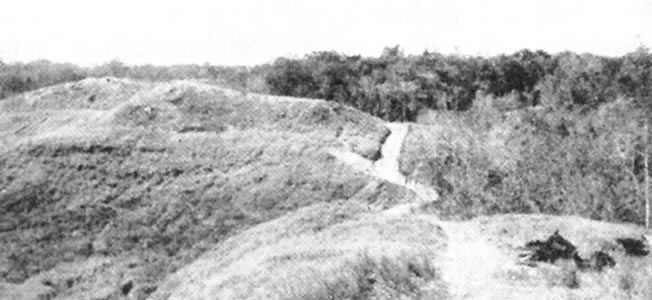
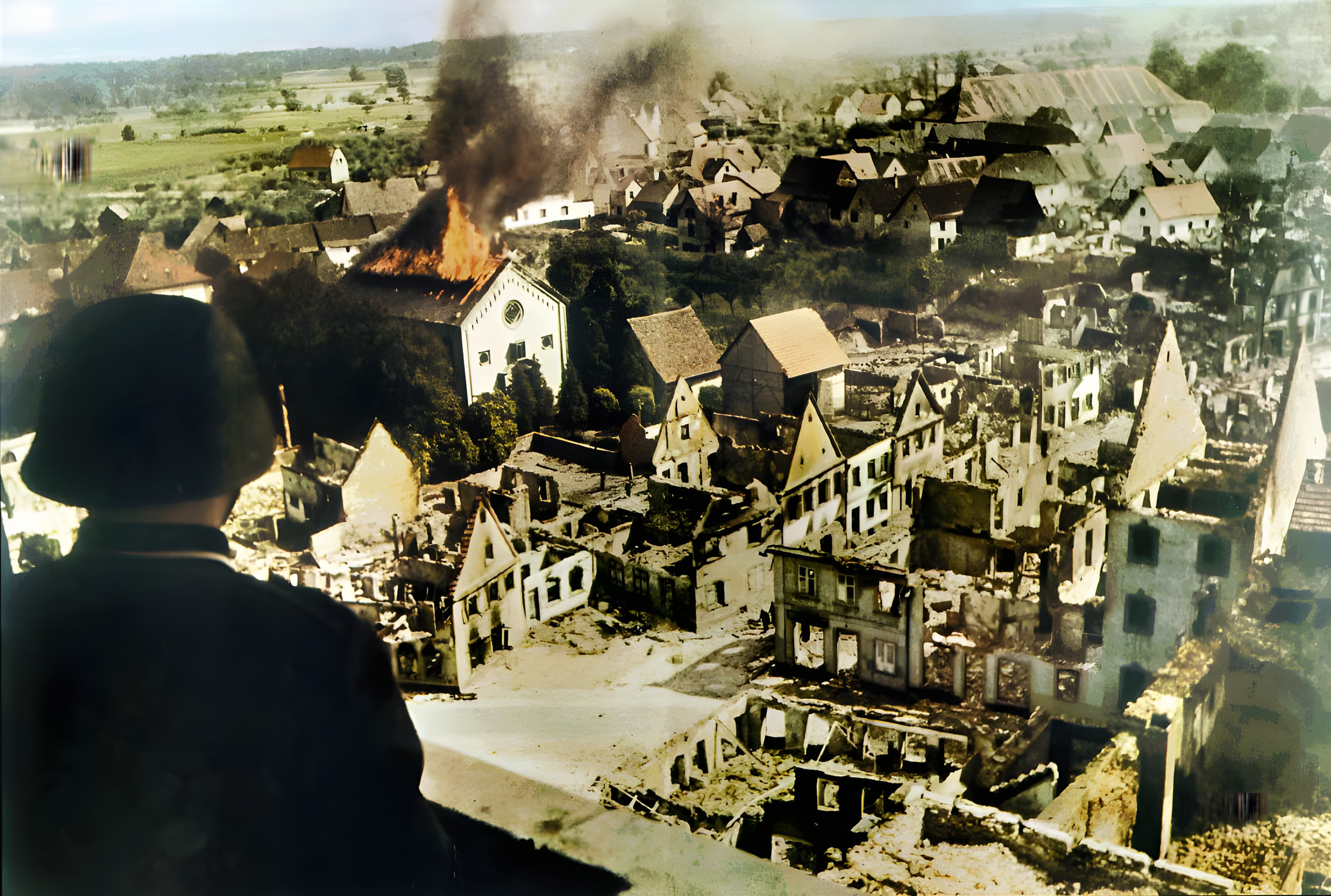
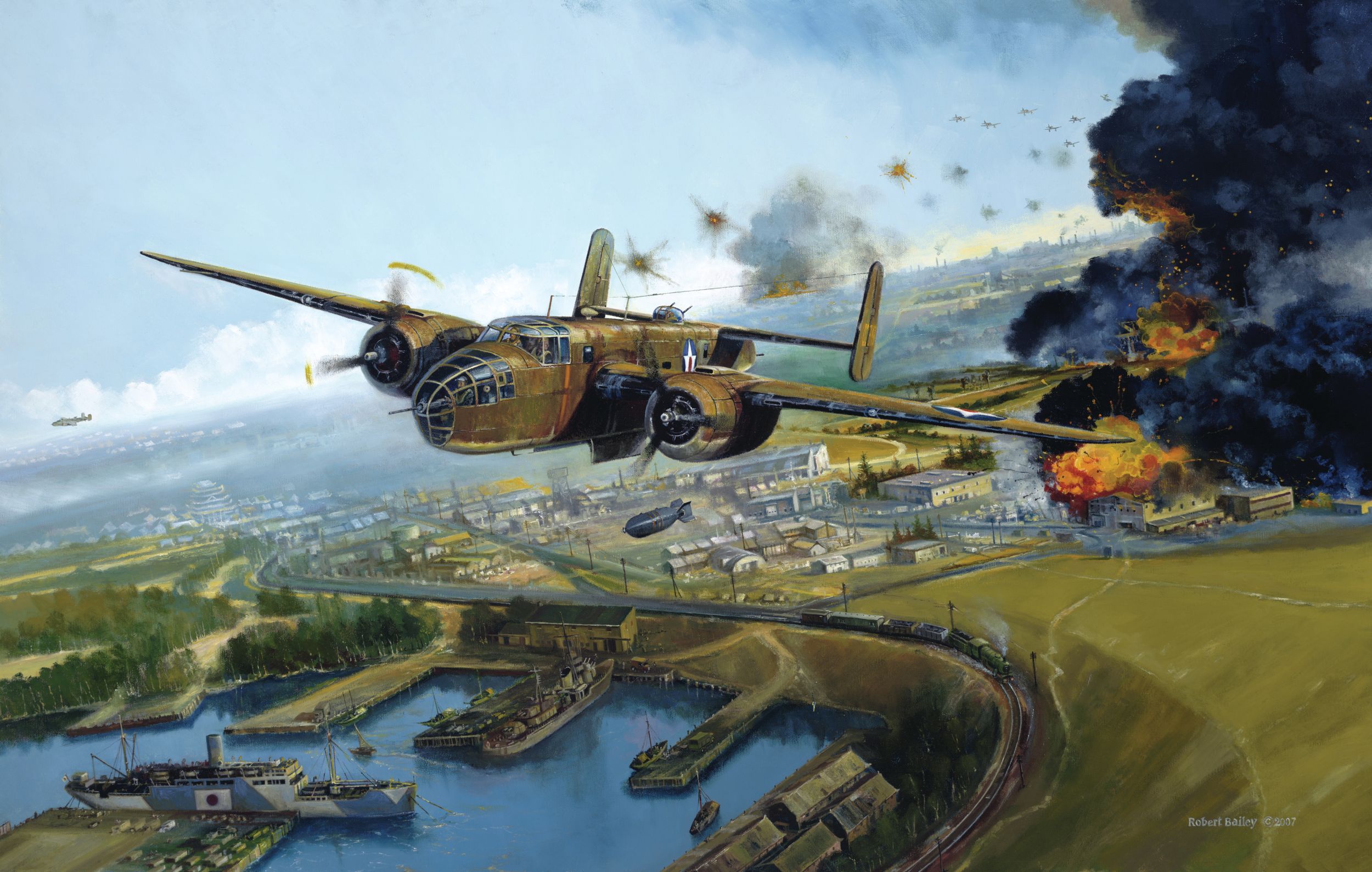
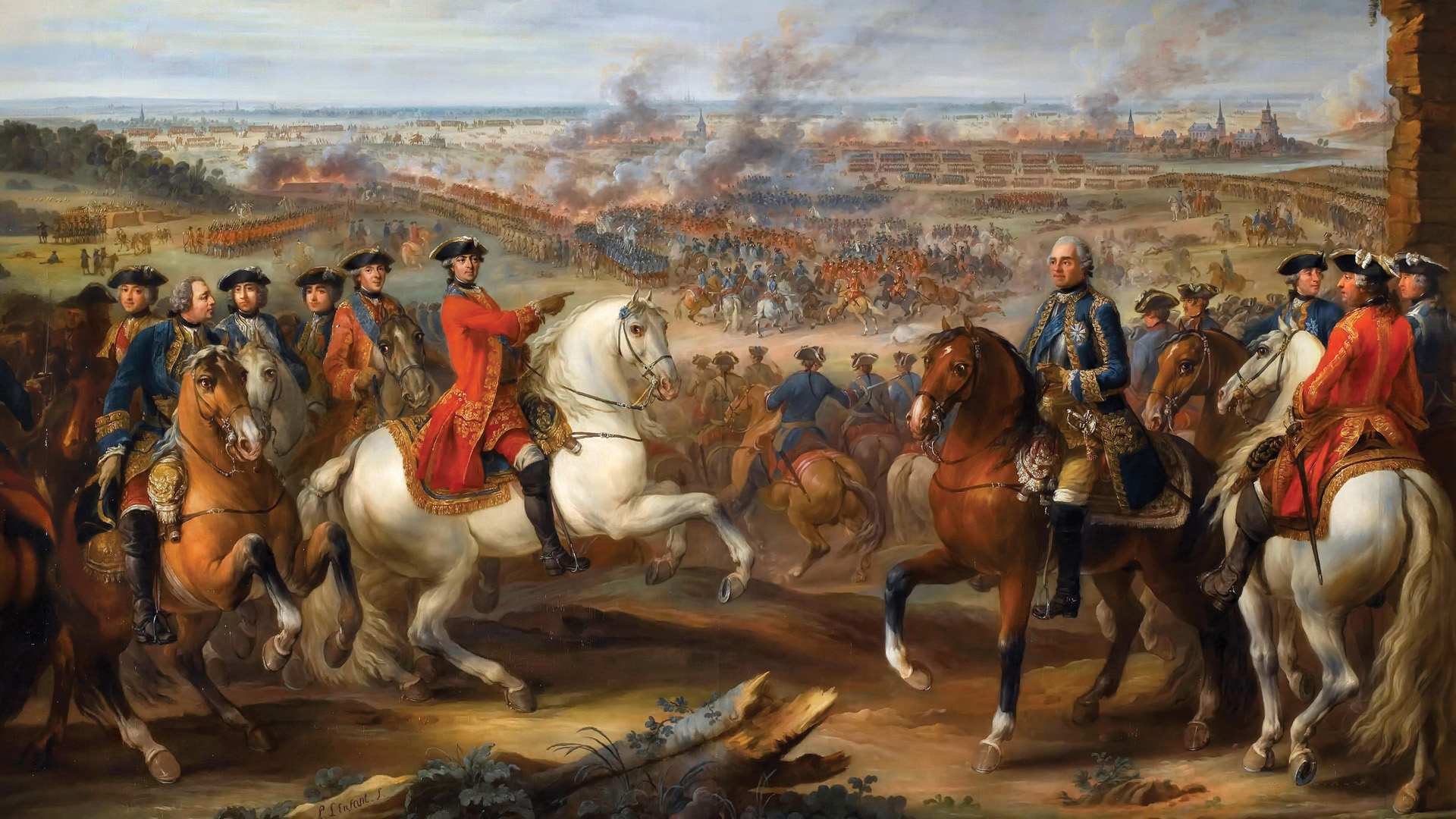
Join The Conversation
Comments
View All Comments